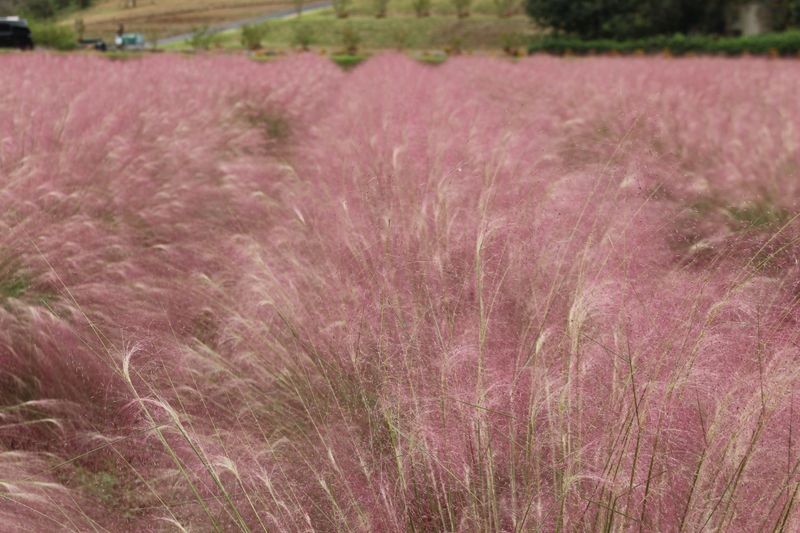Oct 18, 2024
Autumn plants in Japan: muhly grass
I really love muhly grass. Although, I don't see it often here, I had actually never seen it at all until I came to Japan! Reportedly it is a North American plant. I am surprised large displays of them are not more widespread, because they are an easy to grow plant. Moreover, they need very little maintenance. Where I do see them most is in gardens. Just like in spring, there are 'open gardens' in autumn in Japan. Muhly grass make a beautiful addition to the garden.
Muhly grass

Just like Kochia, muhly grass greatly reminds me of the Trolls Dolls with the pink hair. In fact, pink hair grass is actually another name for this plant! The scientific name and the name in Japanese is a mouthful: Muhlenbergia capillaris. They may eventually give it an easier to say name in Japanese! Or maybe there is already another name for it. But I only know it as ミューレンベルギアカピラリス. I wouldn't have known the name at all if it were not for a large scale display I went to see in Saitama prefecture!
According to information at the aforementioned display I went to see in Saitama, muhly grass blooms between September and November in Japan and turns pink around early October. Have you ever seen muhly grass before? And in Japan?
Former nickname was "Saitama". Changed it to save confusion on place review posts! Irish, 20+ years in Japan! I also write on my personal website: insaitama.com



2 Comments
TonetoEdo
on Oct 20
I've spied it a few times here. And I looked it up. It's native to parts of the US and endangered in some states. Saitama's a curious haven for endangered species - I reviewed a small park in Kasukabe that has geese from China endangered in their home habitat. https://www.city-cost.com/reviews/Mx3ay-Oike_Water_Park_Outdoor_Kasukabe_shi?vid=1
BigfamJapan
on Oct 23
@TonetoEdo that park looks very picturesque. And very interesting that the geese were introduced by a local zoo and that they adapted well.